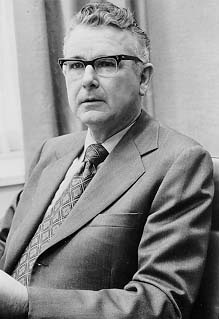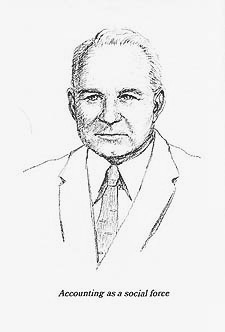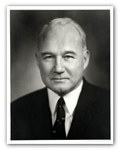| Maurice Moonitz | Robert Sprouse |
 |
ARS
Number
1,
"The
Basic
Postulates of Accounting", Maurice Moonitz,
1961
ARS Number 3, "A Tentative Set of Broad Accounting Principles For Business Enterprises", Robert T. Sprouse And Maurice Moonitz |
 |
ARS Number 1 consisted of an exposition and explanation of three tiers of accounting postulates. . . . . . many readers found the Moonitz study to be too abstract and general to engage their interest and critical thought. |
In ARS Number 3, Sprouse and Moonitz argued that the use of current costs should be expanded. They advocated the use of current replacement costs for merchandise inventories and for plant and equipment, as well as the use of discounted present values for receivables and payables to be settled in cash. In the early 1960s, the use of present values of expected future cash receipts was virtually unknown in U.S. financial reporting, and current values (except in “lower of cost or market”) were hardly to be found. |
| (source: Stephen
Zeff, THE EVOLUTION OF THE CONCEPTUAL
FRAMEWORK FOR BUSINESS ENTERPRISES IN THE
UNITED STATES, Accounting Historians Journal
Vol. 26, No. 2 December 1999) |
|
In the opinion of the Director of Accounting Research, these two studies comply with the instructions to the Accounting Research Division to make a study of the basic postulates and broad principles of accounting. Prior to its publication, Study No. 3 has been read and commented upon by a limited number of people in the field of accounting. Their reaction range from endorsement of the ideas set forth in the study of "Broad Principles: to misgivings that compliance with the recommendations set forth by the authors would lead to misleading financial statements. The Board is therefore treating these two studies as conscientious attempts by the accounting research staff to resolve major accounting issues which, however, contain inferences and recommendations in part of a speculative nature.
The Board feels that there is ample room for improvement in present generally accepted accounting principles and a need to narrow or eliminate areas of difference which now exist. It hopes the studies will stimulate constructive comment and discussion in the areas of the basic postulates and broad principles and practices of accounting. Accounting principles and practices should be adapted to meet changing conditions, and therefore, there should be experimentation with new principles and new forms of reporting to meet these conditions. The Board believes, however, that while these studies are a valuable contribution to accounting thinking, they are too radically different from present generally accepted accounting principles for acceptance at this time.
After a period of exposure and consideration, some of the specific recommendations in these studies may prove acceptable to the Board while others may not. The Board therefore will await the results of this exposure and consideration before taking further action on these studies..

